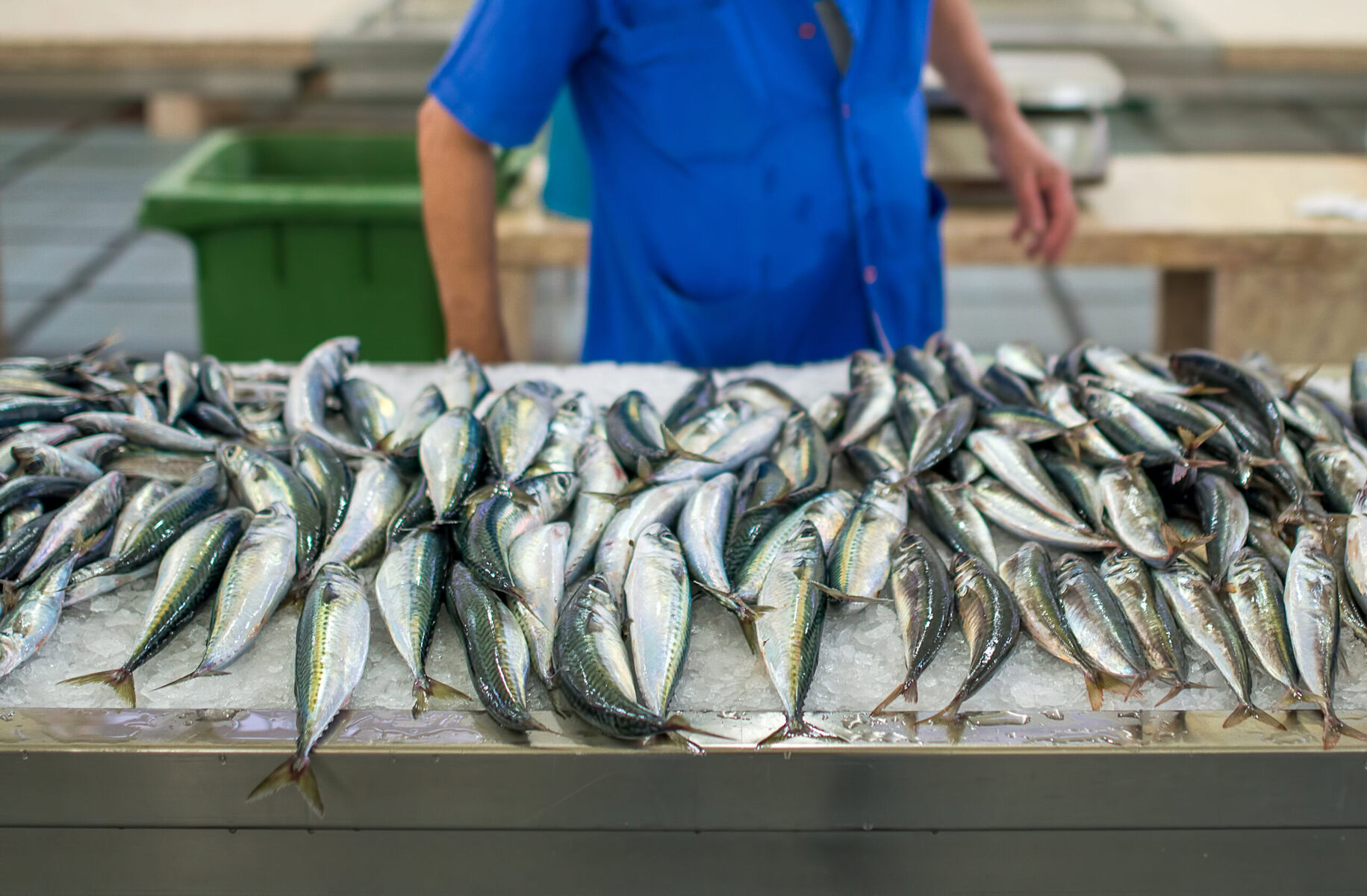
reasonstobecheerful.world
How the Atlantic Mackerel Bounced Back From Overfishing
In the summer of 2018, while commercial tuna fishing off Maine’s Monhegan Island, Tim LaRochelle kept encountering a species different from the one he had set out to hook. “We were catching tons of mackerel,” he recalls. “Just vast, vast amounts.”
Seeing profit potential in a fish that hadn’t previously been his priority, LaRochelle took a cue from the ocean and rigged up his 42-foot boat, the Mary Jane 2, with an automatic jigging machine — the type commonly used to catch zippy, pelagic fish — with the hope that those giant, shimmering schools of mackerel would still be waiting for him in Maine’s chilly surf. Though it took a few fishing seasons to work out the kinks of the rigging system he had taught himself how to use, LaRochelle’s bet paid off. By 2020, with his gear in good working order, the Mary Jane 2 was catching close to 21,000 pounds of mackerel in the span of just three days.
Mackerel played an integral role in the New England economy for generations. Credit: Bengt Nyman / Wikimedia Commons
But this bounty wouldn’t last. In the fall of 2021, just as LaRochelle had started landing large quantities of mackerel, the U.S. government shut down the commercial fishery — the result of mechanism built into a 2010 federal law to help stem overfishing — and by 2022, a biomass assessment conducted by NOAA found that the species population was at an all-time low.
The fishery’s sudden shuttering was a subtle but significant loss for the broader New England fishing community. For generations, mackerel played an integral role in the region’s economy as a canning species as well as in the fabric of its cultural ebbs and flows. Chris Uraneck, a marine resource specialist for the Maine Department of Marine Resources, who specializes in the saltwater recreational sector where mackerel are often fished for bait or sport, says his grandmother-in-law holds fond memories of the fish. “She can remember people going door-to-door selling mackerel. They would ride around on a bicycle and sell it to people to eat,” he says. “Things have changed, obviously.”
But hopefully, things are about to change again. The 2024 removal of the Atlantic mackerel from NOAA’s overfishing list indicates that the shutdown that so abruptly ended the season in 2021, harming the income of commercial fishermen like LaRochelle, potentially worked, and that more abundant days are ahead for the fishery.
Atlantic mackerel top out at just 18 inches in length. Credit: Rohit Naniwadekar / Wikimedia Commons
The Atlantic mackerel is not a sexy fish. It doesn’t have the charisma of a whale or demand our reverence the way a shark does. Topping out at 18 inches, it’s not the kind of catch you can sport fish and then pose with in a picture, its giant body dangling by your tiny one to command awe of its absolute girth, the way you can with bluefin tuna.
But the Atlantic mackerel is its own evolutionary spectacle. Perhaps because many species, not just our own, have eaten it over millennia, it has adapted to flee: The Atlantic mackerel doesn’t have a gas bladder, making it a very fast swimmer, faster than its fellow pelagic counterparts. And the tiger dappling along its back blends the fish nicely into the sunshine-marbled surface of ocean waters. It is an important fish of our seafood chain: Remove it, and the rest collapses. But it is also a marvel all on its own — it took thousands of years of transformational work to get here.
The fish’s population has also been notoriously difficult to track. Shortly after European colonizers set foot on the North American continent, they adopted the Atlantic mackerel as a staple in their diet, so abundant and catchable was the species. Though Indigenous societies had been living in the region for thousands of years and fluently managing its fisheries, the colonizers gorging on mackerel made such an impact on the population that in 1670, a law was passed regulating the season in which mackerel could be taken and the gear that could be used in the process. But despite close monitoring for generations, a “pattern of scarcity to super abundance” that puzzled regulators emerged, and there were often years so thin that mythology attached itself to the fish: Lore had it that mackerel buried themselves in the mud of the ocean floor, hibernating during the winter.
Weighed down by negative news?
Our smart, bright, weekly newsletter is the uplift you’ve been looking for.
[contact-form-7]
Despite this variability, the Atlantic mackerel fishery persisted across generations as one of the region’s most important fisheries, becoming New England’s fifth most valuable marine species after lobster, cod, haddock and perch, by 1940. During the first half of the 20th century, American commercial fisheries saw their stocks being drained by operations without limits, which included fleets from foreign countries. Regulations were sparse, with many fisheries being managed by rules that varied state by state and primarily focused on gear restrictions.
The passing of the Magnuson-Stevens Act in 1976 aimed to rebuild the country’s fisheries by implementing standards for the industry in order to prevent the taking of more fish species than “nature [could] replace” while simultaneously rebuilding populations. But the law did little to stem some of the bigger overfishing issues and, in 2010, after years of criticism, it was amended to include the National Catch Share Policy. This established “sectors” in New England specifically — voluntary fishermen-led collectives that had new governing rules, including the one responsible for the 2021 shut-off of the mackerel fishing season in Maine. These sectors monitor how much fish is being caught, and once the established limit has been reached for a particular species, no more of that fish can be taken, no matter when it is in the fishing season.
An 1868 illustration of an Atlantic mackerel. Credit: Auguste Henri André Duméril, Henri de La Blanchère, A. Mesnel / Biodiversity Heritage Library
The amendments made Magnuson-Stevens more effective, and as a result, modest but notable wins are beginning to pile up: In 2019, the groundfish fishery reopened off the coast of Oregon less than two decades after its closing; Snohomish coho salmon, deemed overfished in 2018, have recovered to a sustainable stock as of 2023; and the Atlantic sea scallop has been restored to the status of a profitable commercial industry. In total, nearly 50 fish stocks have been rebuilt under Magnuson-Stevens.
Now the Atlantic mackerel gets to join this roster. In late spring of 2024, NOAA released its “Status of the Stocks” report, and conspicuously missing from the overfishing list was the Gulf of Maine stock of Atlantic mackerel. Its population appears to have been a direct beneficiary of some of the Magnuson-Stevens’ guidelines, including the one that shut down the fishery so early in 2021. Despite the fact that the regulating bodies and the commercial fishing operations share the goal of stewarding a healthy fishery, regulations can often hurt fishermen economically in the short term. For people like LaRochelle, who have had to deal with the frustrating terms of regulation — including the financial hits sustained as a result — the mackerel’s removal from the list should come as objectively good news.
Wait, you're not a member yet?
Join the Reasons to be Cheerful community by supporting our nonprofit publication and giving what you can.
Join
Cancel anytime
But as is typical for the notoriously enigmatic fish, its departure from the overfishing list comes with a bit of mystery. Despite the data trending in the right direction, stock numbers are still elliptical, and more time is needed to fully determine the nature of the Atlantic mackerel’s recovery. “The best available science says yes [we can get the stock back to larger population numbers], and we’ve certainly seen other stocks that were overfished and recovered,” says Jason Didden, a fishery management specialist at the Mid-Atlantic Fishery Management Council.
And word is, those gleaming schools that LaRochelle once encountered have been spotted yet again. “We’ve gotten reports from fishermen that have been seeing a lot of mackerel this year,” assures Didden. “So hopefully, hopefully, we’ve had some recovery.”
The post How the Atlantic Mackerel Bounced Back From Overfishing appeared first on Reasons to be Cheerful.














